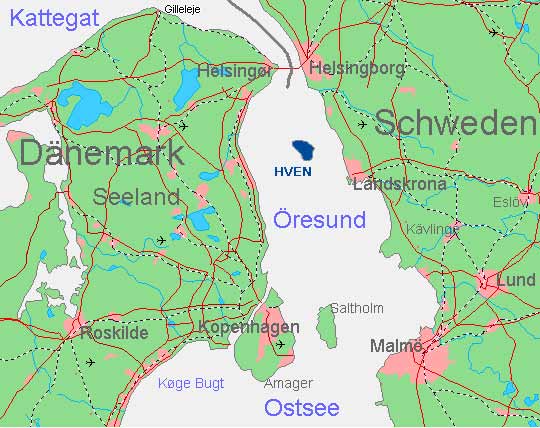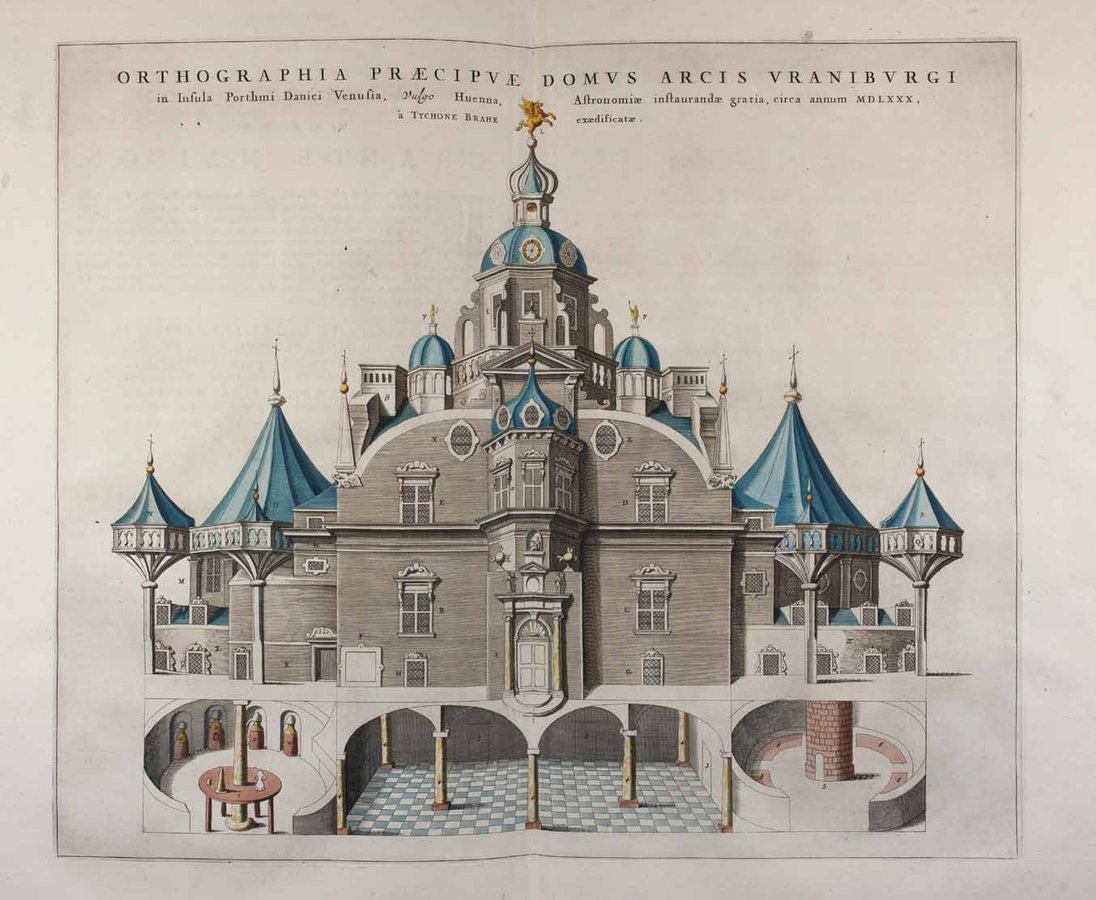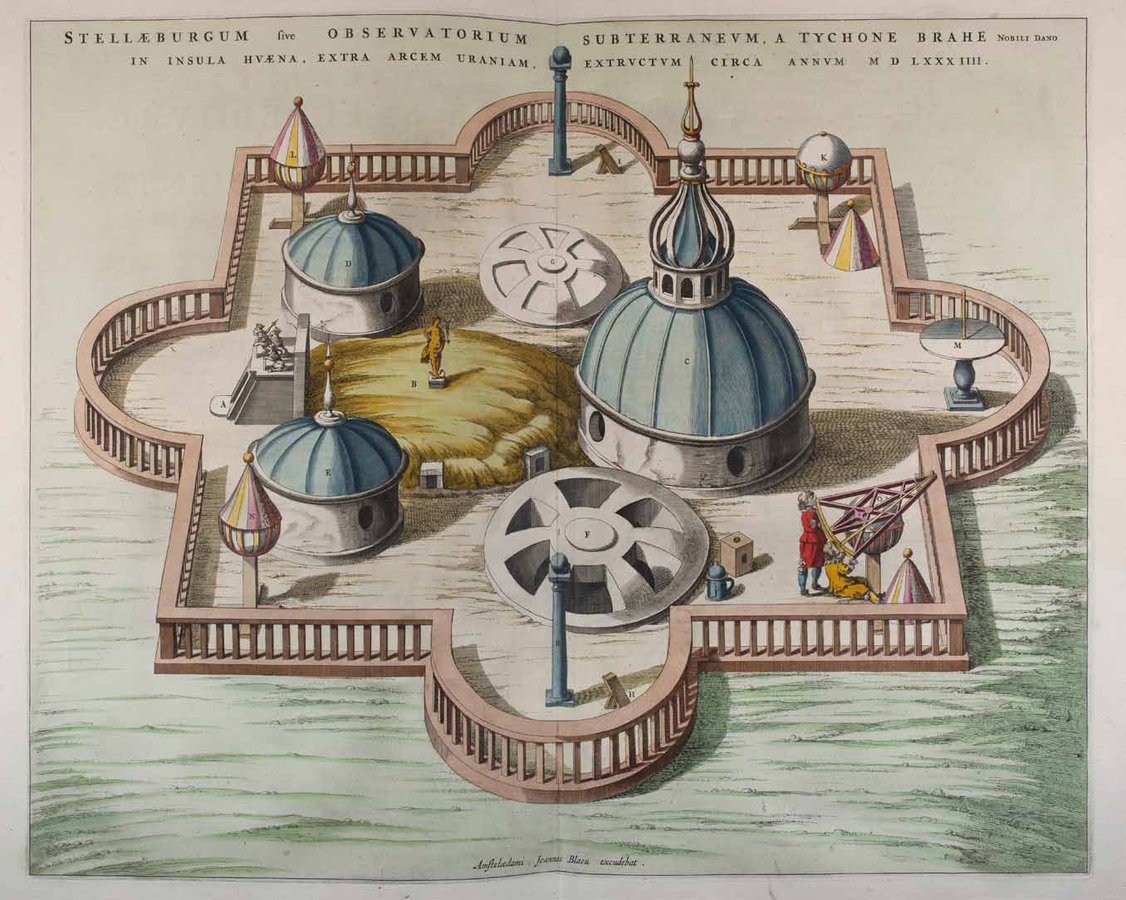The island Hven
The Swedish island Hven is located 4.3 kilometres off the coast of Sweden, in the Öresund. The island belonged to Denmark in the 16th century and was given to Tycho Brahe by the Danish king Frederik II for research purposes. The monarch guaranteed the astronomer two percent of his household for installing and equipping his observatories Uraniborg and Stjerneborg.
Tycho Brahe Museum
The Tycho Brahe Museum has been on the Isle of Hven from the 1930s on, in the very middle of the straight Öresund. The premises comprise of an exhibition on the former All Saints Church, the observatory Stjerneborg, the observatory Stjerneborg, the recreated Renaissance garden, a phased path that shall symbolize the distance between the planets and a playground where children can enjoy historical games and, simultaneously, learn something. The remains of Brahe’s castle and his observatory are protected as monuments on the island. The work on the Isle of Hven had a major impact on Brahe’s life and lifework and finally resulted into a great legacy for subsequent scientists.
Further information on the Tycho Brahe Museum are provided here.
Observatory Uraniburg
- Build between 1576 and 1580
- Uraniborg (German: Castle of Urania, the muse of astronomy)
- Architect: Hans van Steenwinckel, the Elder
- Iconography: Johan Gregor van der Schardt
- Uraniborg was a research centre for students from many countries
- The palace was also characterised by the exploration of alchemy.
- The herb garden was designed as a composition of geometric shapes.
- It was only late that Brahe recognized that Uraniborg was not stable enough to host his precise astronomic instruments, which is why he decided to build new premises.
Observatory Stjerneborg
- Build in: 1586
- Stejerneborg (Latin name: Stellaburgi) means „Castle of the Stars“
- The observatories were built mainly underground for anchoring it on the solid stone located below the sandy soil. Thus, the accuracy of his measurements was increased.
- Among the instruments, there was a quadrant with a 1.55 m diameter and an armillary sphere that allowed to reach a high level of accuracy.
- The observatories were destroyed after Brahe’s death. The underground elements of Stjerneborgs were excavated and covered by a dome in 1950/51 and show multimedia presentations today.



